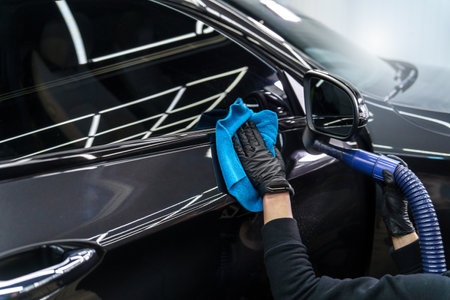1. Introduction to Tire Tread Patterns
Tire tread patterns play a crucial role in a vehicles overall performance. They influence how a car grips the road, disperses water, and handles different driving conditions. Understanding the different types of tread patterns can help drivers make informed decisions when selecting tires for their vehicles.
Types of Tire Tread Patterns
There are four primary types of tire tread patterns, each designed for specific driving conditions and performance needs:
| Tread Pattern | Characteristics | Best Use |
|---|---|---|
| Symmetrical | Uniform tread design across the tire, providing even wear and durability. | Everyday driving, fuel efficiency, and long tread life. |
| Asymmetrical | Different tread patterns on the inner and outer parts of the tire for improved grip and cornering. | Performance vehicles, dry and wet traction, high-speed stability. |
| Directional | V-shaped tread pattern designed to channel water away and reduce hydroplaning. | Wet conditions, high-speed driving, and enhanced stability. |
| Hybrid | A combination of different tread designs to provide balanced performance. | All-terrain driving, off-road capability, and versatile performance. |
How Tread Patterns Affect Performance
The choice of tread pattern significantly impacts vehicle handling, safety, and efficiency. For example, symmetrical treads provide a quiet and comfortable ride, while directional treads excel in wet conditions by quickly dispersing water. Asymmetrical patterns enhance cornering and grip, making them ideal for performance-oriented drivers.
Key Performance Factors
- Traction: Affects grip on dry and wet roads.
- Water Dispersion: Determines how well the tread channels water away to prevent hydroplaning.
- Noise Levels: Some patterns create more road noise than others.
- Tread Wear: Different designs impact how quickly tires wear down.
Choosing the Right Tire Tread
Selecting the best tire tread pattern depends on driving habits and road conditions. Drivers in wet climates should prioritize directional treads, while those seeking durability and efficiency may opt for symmetrical patterns. Performance-focused drivers might prefer asymmetrical designs for enhanced handling.
2. How Tire Tread Affects Wet Surface Performance
Explanation of Hydroplaning Resistance
Hydroplaning occurs when a layer of water builds up between the tires and the road, causing the vehicle to lose traction. The tread pattern plays a crucial role in preventing hydroplaning by channeling water away from the contact patch. Tires with deeper grooves and directional tread designs are particularly effective at reducing the risk of hydroplaning as they help disperse water more efficiently.
Water Evacuation and Tread Design
The ability of a tire tread to evacuate water is essential for maintaining grip on wet surfaces. Different tread patterns are designed to handle water evacuation in various ways. Here’s a comparison of common tread types and their effectiveness in water evacuation:
| Tread Pattern | Water Evacuation Efficiency | Best Use Case |
|---|---|---|
| Symmetrical Tread | Moderate | Everyday driving, dry and light wet conditions |
| Asymmetrical Tread | High | Performance driving, enhanced wet grip |
| Directional Tread | Very High | Rainy conditions, high-speed wet handling |
| Combination (Hybrid) Tread | Balanced | Mixed dry and wet conditions |
Traction on Wet Roads
Traction on wet roads depends on how well the tire maintains contact with the surface. Treads with siping—small slits within the tread blocks—enhance grip by creating additional biting edges that improve traction on slick surfaces. Soft rubber compounds also play a role by providing better grip in wet conditions.
Key Factors That Improve Wet Traction:
- Deep tread grooves for water dispersion
- Directional tread patterns for efficient drainage
- Siping to create more gripping edges
- Rubber compounds optimized for wet grip
By choosing the right tread pattern, drivers can significantly reduce the risks of hydroplaning and enhance traction on wet roads, leading to safer driving experiences.
![]()
3. How Tire Tread Affects Dry Surface Performance
When driving on dry pavement, the design of your tires tread plays a significant role in grip, stability, and braking efficiency. Unlike wet conditions where tread channels water away, dry surfaces require a different approach to maximize contact between the tire and the road.
Grip on Dry Roads
A tires grip on dry pavement depends largely on the tread pattern and the rubber compound. Tires with minimal tread, such as high-performance summer tires, provide more surface contact with the road, increasing traction. This helps improve cornering and acceleration performance.
Stability and Handling
Tread pattern affects how stable a vehicle feels during high-speed driving. Tires with a solid center rib typically provide better stability and steering response. Asymmetrical tread patterns are also designed to balance stability while allowing effective cornering performance.
Braking Efficiency
The way a tire distributes braking forces is influenced by its tread pattern. Tires with larger, solid tread blocks offer better braking performance because they allow more rubber to stay in contact with the road. Below is a comparison of how different tread types impact braking on dry surfaces:
| Tread Type | Braking Efficiency | Typical Use |
|---|---|---|
| Slick/Minimal Tread | Excellent | Racing, Performance Vehicles |
| Asymmetrical Tread | Very Good | Sports Cars, High-Performance Street Driving |
| Symmetrical Tread | Good | General All-Season Use |
| Knobby/Off-Road Tread | Poor | Off-Road, Mud-Terrain |
Choosing the Right Tire for Dry Conditions
To maximize performance on dry roads, select a tire that matches your driving style. If you drive a performance vehicle, summer or high-performance tires with minimal tread will offer the best grip and control. For everyday use, an asymmetrical or symmetrical tread design provides a good balance of safety and performance.
4. Comparing Different Tread Patterns
When it comes to tire performance, the tread pattern plays a crucial role in how well a vehicle handles both wet and dry conditions. There are three main types of tread designs: symmetrical, asymmetrical, and directional. Each type has its strengths and weaknesses, making them suitable for different driving needs.
Symmetrical Tread Pattern
Symmetrical tread patterns have the same design across the entire tire, which allows for easy tire rotation and even wear. These tires are commonly found on standard passenger cars and offer a smooth, quiet ride.
Pros:
- Long-lasting tread life
- Low rolling resistance (better fuel efficiency)
- Quiet and comfortable ride
- Flexible tire rotation patterns
Cons:
- Less grip on wet roads compared to directional patterns
- Not optimized for high-performance driving
Asymmetrical Tread Pattern
Asymmetrical tread patterns feature different designs on the inner and outer parts of the tire. The inner side focuses on water dispersion, while the outer side enhances traction and cornering grip.
Pros:
- Improved dry and wet performance
- Better cornering stability
- Good balance between grip and efficiency
Cons:
- Limited rotation options (only side-to-side)
- More expensive than symmetrical tires
Directional Tread Pattern
Directional tread patterns are designed to rotate in only one direction, with deep grooves that efficiently channel water away, reducing the risk of hydroplaning. These are often found on performance and all-season tires.
Pros:
- Excellent water dispersion for wet conditions
- Enhanced traction for fast acceleration
- Great for high-performance driving
Cons:
- Limited tire rotation options (only front-to-back)
- Higher wear rate compared to symmetrical designs
Comparison Table
| Tread Pattern | Best For | Wet Performance | Dry Performance | Rotation Flexibility |
|---|---|---|---|---|
| Symmetrical | Daily driving, fuel efficiency | Moderate | Good | High (multiple rotation options) |
| Asymmetrical | Balanced wet and dry performance | High | High | Medium (side-to-side rotation) |
| Directional | Wet roads, high performance | Very High | Very High | Low (front-to-back only) |
Choosing the right tread pattern depends on your driving conditions and priorities. If you want even wear and a quiet ride, symmetrical tires are ideal. If you need better grip and handling, asymmetrical tires are a solid choice. For wet conditions and high performance, directional tread patterns provide the best traction and water dispersion.
5. Choosing the Right Tire for Your Needs
When selecting the best tire tread pattern, its important to consider your driving conditions, vehicle type, and personal driving style. Different tread designs offer unique advantages in terms of grip, handling, and durability, so choosing the right one will improve your driving experience and safety.
Understanding Your Driving Conditions
The right tread pattern largely depends on the conditions you frequently drive in. Take a look at the table below to see which tread design best suits different driving environments.
| Driving Condition | Recommended Tread Pattern |
|---|---|
| Dry Roads | Ribbed or asymmetric tread patterns for better stability and fuel efficiency. |
| Wet Roads | Directional tread patterns to improve water dispersion and reduce hydroplaning. |
| Snow or Ice | Winter tires with deep grooves and siping for better traction. |
| Off-Road | All-terrain or mud-terrain tires with large lugs for extra grip on rough surfaces. |
Selecting the Right Tread for Your Vehicle Type
Your vehicle type also plays a major role in determining the best tread design. Different vehicles require different levels of traction and durability from their tires.
| Vehicle Type | Best Tread Pattern |
|---|---|
| Sedan | Asymmetric or ribbed treads for smooth handling and fuel efficiency. |
| Sports Car | Performance tires with directional treads for enhanced grip. |
| Truck/SUV | All-terrain or mud-terrain tread patterns for better off-road capability. |
| Electric Vehicle | Low rolling resistance tread for greater efficiency and range. |
Matching Your Driving Style
If you are a performance driver, you may benefit from directional or asymmetric tread patterns that offer superior handling and grip. On the other hand, if you prioritize comfort and longevity, consider ribbed treads that provide a quiet ride and longer tread life.
Final Thoughts on Tire Selection
By understanding driving conditions, vehicle type, and personal preferences, you can choose a tire tread pattern that enhances safety, performance, and efficiency. Paying attention to these factors will ensure you get the best performance from your tires.


